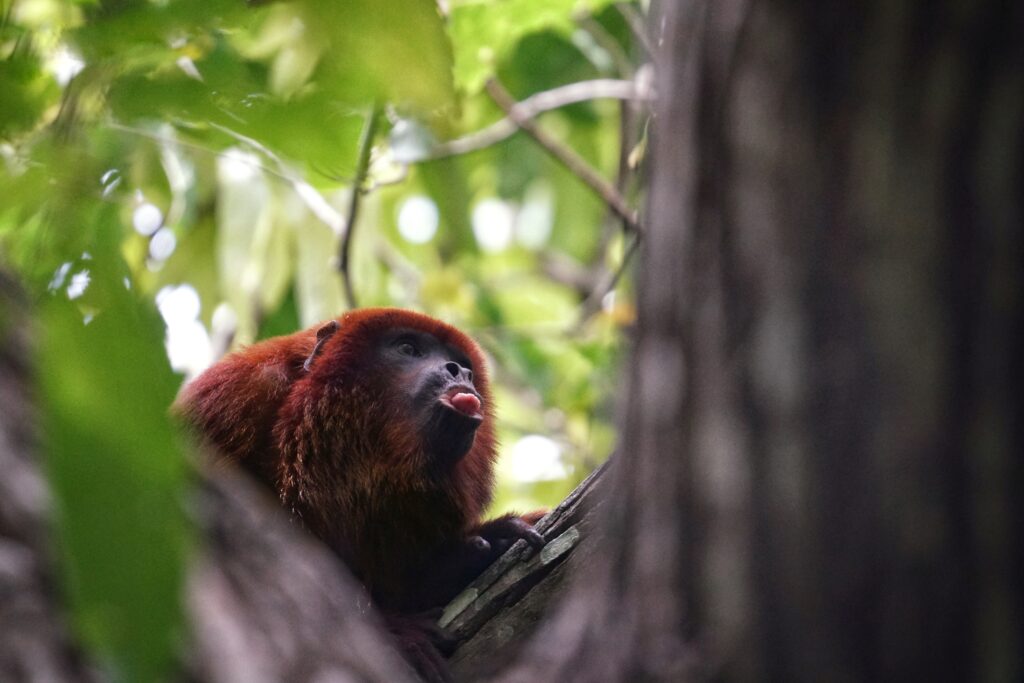
Behavior
Red howler monkeys live in a strict hierarchy in which a single alpha male leads a group of six to fifteen individuals, comprised of the one or very few males, several females and their offspring.
Physical aggression is very out of the ordinary between males and females but more frequent between males. After growing up young males are usually expelled and forced to seek another group where they either fight for the leading male spot or assume a much inferior position. These hierarchy fights often result in serious injuries on their tail and extremities. When a foreign monkey invades a new group and assumes the alpha position, they commonly kill the offspring so the females reproduce with their new leader.
They start their day by howling to establish themselves within their home range and to keep the distance to other nearby troops or individuals. Because of these conflicts between groups are very scarce and unlikely. They carry on this behavior before resting at midday and before settling down on their sleeping tree.
Due to their thick fur and by spending all of their time in trees, red howler monkeys are extremely vulnerable to ticks and flees. One of their “resting-activities” is the so-called grooming where they care for each other, looking through fur and hair to get rid of any external parasites.
They are also known to be the loudest terrestrial animal in the world. In the forest their call can be heard to up to 5km away. The hyoid bone in their throat is much greater than these of humans. This bone and their throat pouch allow them to howl so deafening.
Diet and ecological importance
Howler monkeys are herbivores, meaning they only consume leaves and fruits. Occasionally, they also eat insects as a byproduct which subsidizes their diet since their protein intake is fairly low. To digest the high amount of cellulose they have special bacteria in their stomach that work similarly like in cows.
They have an extremely wasteful style of eating which is characterized by sometimes dropping whole fruits after taking just a single bite of them. As a consequence of their eating manners, they are also highly important in the ecology of the forests they inhabit. They play a vital role in seed dispersion and with it the biological diversity of their woodlands. Almost 90% of ingested seeds leave their body undamaged and thus create a nutrient-rich environment for them to grow in their dung.
Prehensile tail
These monkeys have a handy prehensile tail, so strong, it can support their whole bodyweight. The term prehensile refers to “able to grasp”.
The last third of their tail is hairless on the underside to ensure the best grip in the canopy an to minimize the risk of falling. When travelling through the treetops they always grasp a branch with at least one hand or foot and always their tail.
Shortly after they are born their tail is not yet developed adequately to support them so they are forced to hold on to their mothers with all their strength until they are strong enough to use it in the intended way.
Curiosity with humans
They are also famous for their reaction humans or intruders that invade their home range. First the males of the group will try to break off dead branches and let them fall, aiming for their invaders. When the disturbance persists, they often try to defecate on people. Normally, they keep up this behavior until the intruders leave.
